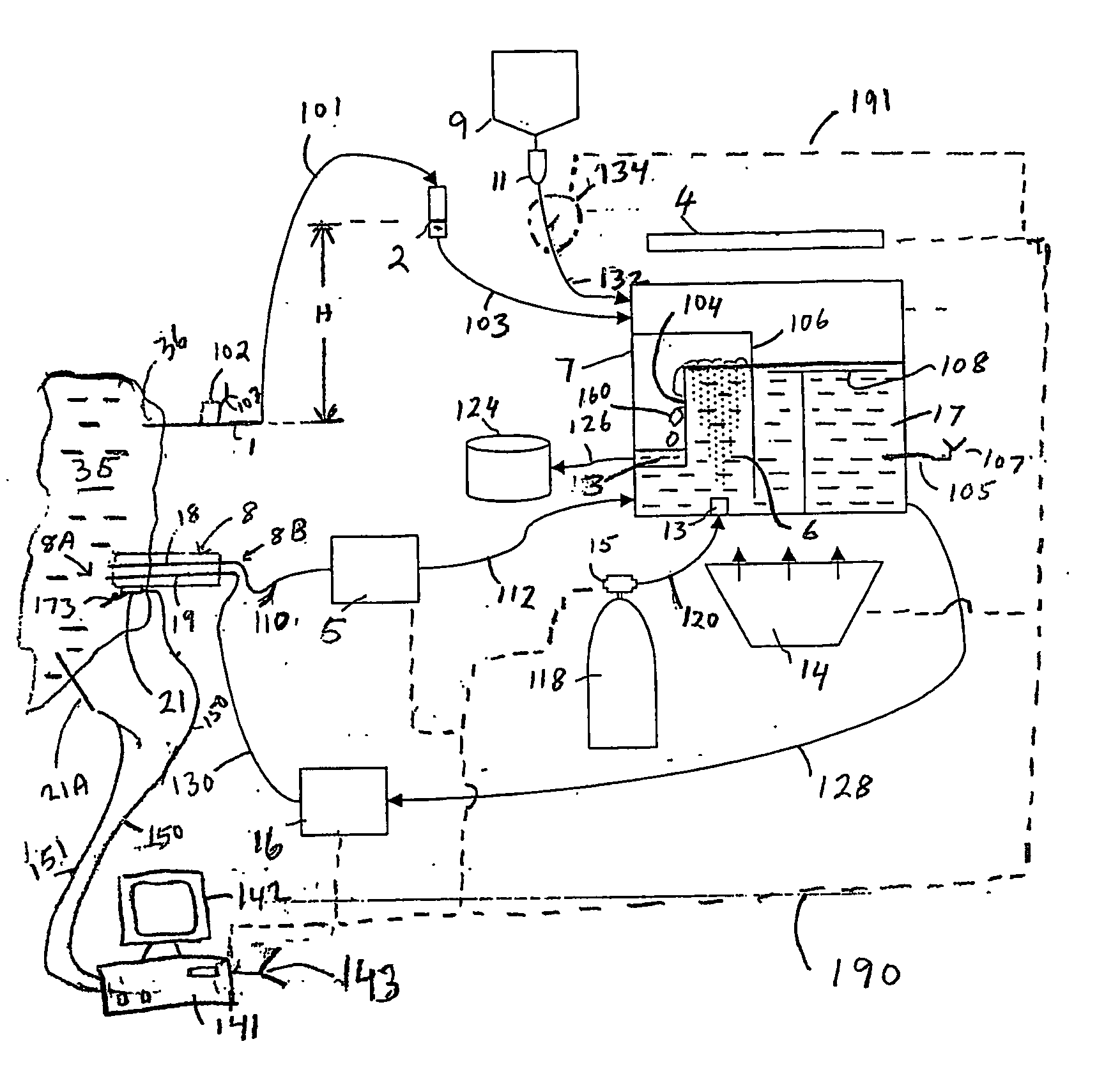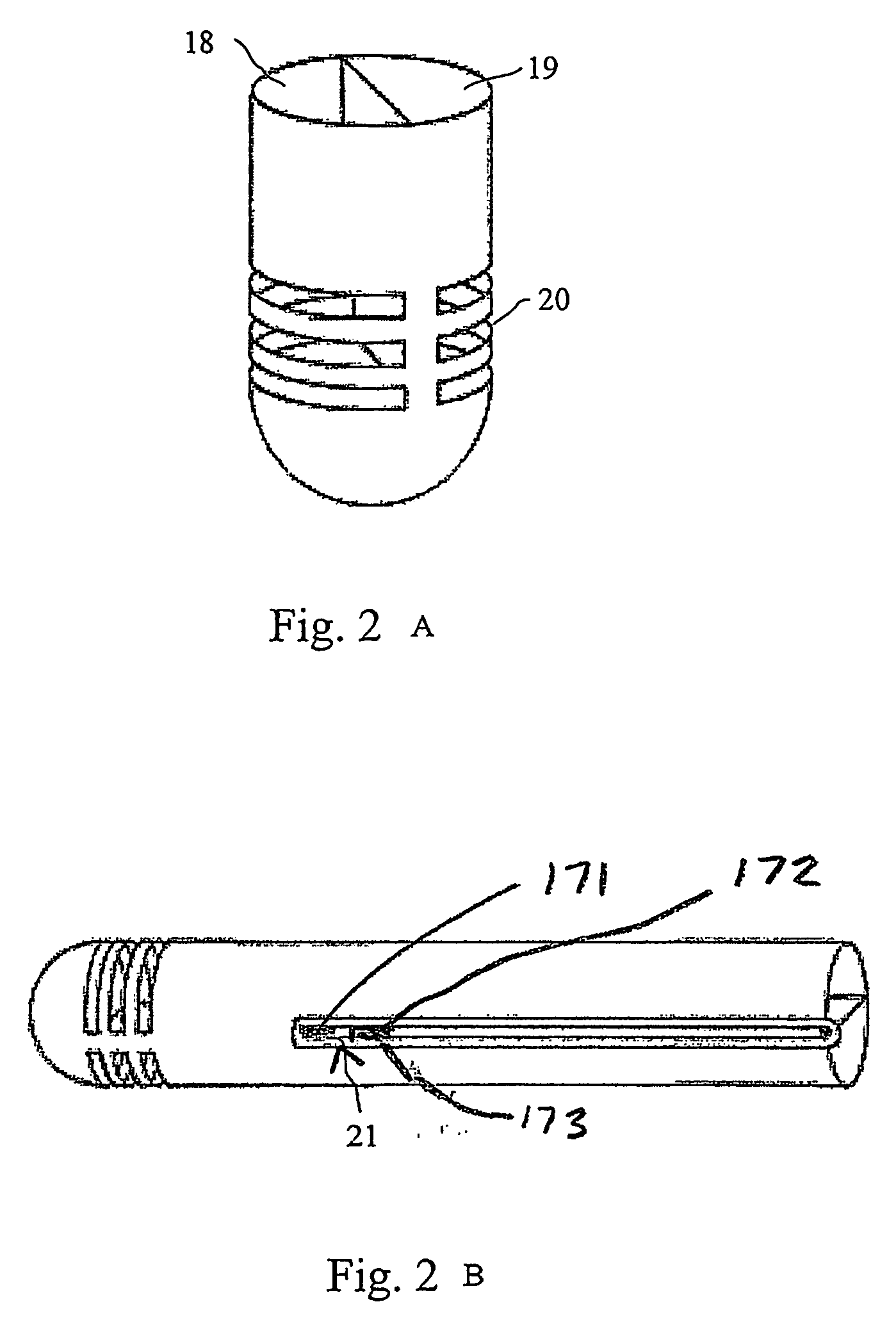Device for the extravascular recirculation of liquid in body cavities
a liquid recirculation and body cavity technology, applied in the direction of contraceptive devices, catheters, wound drains, etc., can solve the problems of reduced susceptibility to injury, decreased bleeding due to blood flow drop, dampen enthusiasm, etc., and achieve the effect of enhancing the distribution of liquid
- Summary
- Abstract
- Description
- Claims
- Application Information
AI Technical Summary
Benefits of technology
Problems solved by technology
Method used
Image
Examples
example
[0072] An arrangement as shown in FIG. 1 was used to remove cerebrospinal fluid and return a mixture of cerebrospinal fluid and artificial cerebrospinal fluid cooled to approximately 2° C. in an adolescent pig (40 lbs). The animal was intubated and monitored under general anaesthesia. Rectal body temperature was controlled at 37° C. using a heating pad. The primary catheter was inserted into the right lateral ventricle while a temperature probe was inserted into the brain parenchyma on the opposite side of the brain (left parietooccipital region). The indicated flow rates were produced by varying the speed of the outflow pump 5 and intracranial pressure was adjusted by controlling the speed of the inflow pump 8.
[0073] The results of three runs at different flow rates are presented in FIG. 4. For each run, the intracranial pressure (ICP) in millimetres of mercury is shown as white circles and the temperature of the left parietooccipital region of the brain in degrees Celsius is show...
PUM
 Login to View More
Login to View More Abstract
Description
Claims
Application Information
 Login to View More
Login to View More - R&D
- Intellectual Property
- Life Sciences
- Materials
- Tech Scout
- Unparalleled Data Quality
- Higher Quality Content
- 60% Fewer Hallucinations
Browse by: Latest US Patents, China's latest patents, Technical Efficacy Thesaurus, Application Domain, Technology Topic, Popular Technical Reports.
© 2025 PatSnap. All rights reserved.Legal|Privacy policy|Modern Slavery Act Transparency Statement|Sitemap|About US| Contact US: help@patsnap.com



